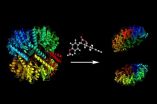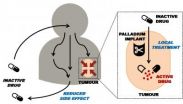(Press-News.org) An international team of scientists under the leadership of the University of Bonn disproves a dogma: To date, immunologists have assumed that the macrophages functioning as "scavenger cells" can be classified into two different forms. In an extensive search, the researchers have now discovered that these immune cells turn into far more different manifestations. These findings also give rise to completely new therapeutic approaches for many widespread diseases. The results are now being published in the renowned journal Immunity.
In the body, macrophages go on patrol as "scavenger cells" and act to eliminate intruders. According to the commonly held belief in immunology, they are divided into two groups, firstly into "classical macrophages" which spur on inflammatory processes, and secondly into "alternative macrophages" which shut down inflammation. Researchers from the University of Bonn, together with their colleagues at the University of Bonn Hospital and from Worcester (USA) and Edinburgh (Scotland) are now toppling this dogma: In a breakthrough discovery, the scientists disprove this simple classification for the scavenger cells.
Macrophages process complex information like a computer
"Many macrophages do not fit this pattern," says Prof. Dr. med. Joachim L. Schultze from the Life & Medical Sciences (LIMES) Institute of the University of Bonn. "Rather, this simple concept stands in the way of innovative therapeutic approaches." According to the researchers' results, the macrophages react to many different stimuli, for example messengers which they process in the most complex way, like a computer. Therefore they do not just differentiate between macrophages which fuel inflammation or anti-inflammatory macrophages, as previously believed. Rather, the scientists have found at least nine different forms which use their weapons to optimally fight intruders in different ways.
The scientists from the LIMES Institute of the University of Bonn used blood samples from different people in order to obtain as many different macrophages as possible from the precursor cells in the samples using various growth factors. While these scavenger cells mature, certain genes are activated in their DNA. The researchers identify which genes these are by means of so-called RNA which functions in the cell as a genetic messenger. "With complex bioinformatic analyses, we obtained a type of fingerprint for each macrophage which showed us which genes in the cell were directly active," reports Prof. Schultze. Using this genetic fingerprint, the scientists were able to deduce which combination of stimuli led to the macrophage developing in a particular direction.
The dawn of completely new therapeutic options
For their bioinformatic data sets, the researchers then performed the acid test: Macrophages were obtained from the lungs of smokers and compared with the same scavenger cells in healthy lungs. It could be seen that the macrophages from smokers' lungs could not be allocated to either the kind that fuels inflammation or to the anti-inflammatory type. The scientist is convinced that "We have to step away from the simple classification of macrophages and investigate them more closely in respective connections with diseases." "When we depart from the conventional pattern, fully new concepts open up."
Much about the activation of macrophages and thus about classical immune reactions can be discerned from the genetic fingerprints. "This is the dawn of new therapy options," says Prof. Schultze. Because macrophages play a role in many widespread diseases including, for example, arteriosclerosis, obesity, diabetes, asthma, Alzheimer's disease and cancer.
INFORMATION:
Publication: Transcriptome-based network analysis reveals a spectrum model of human macrophage activation, "Immunity", DOI: http://dx.doi.org/10.1016/j.immuni.2014.01.006
Contact information:
Prof. Dr. med. Joachim L. Schultze
Life & Medical Sciences (LIMES) Institute
Tel. ++49-228-7362787
E-Mail: j.schultze@uni-bonn.de
Immunologists from the University of Bonn topple dogma
Researchers disprove the hitherto conventional classification of immune cells. Hope for new therapeutic approaches
2014-02-13
ELSE PRESS RELEASES FROM THIS DATE:
Books rate more negatively after winning award, study finds
2014-02-13
Looking for a good book? Stay away from the award-winning section of the bookstore or library.
New research from Amanda Sharkey of the University of Chicago Booth School of Business finds that a book read after winning a prestigious award will likely be judged more negatively than if it's read in its pre-award days.
In "The Paradox of Publicity: How Awards Can Negatively Affect the Evaluation of Quality," to be published in the March issue of Administrative Science Quarterly, Sharkey and colleague Balázs Kovács of the University of Lugano analyze thousands of reader ...
Study: Beauty not disease motivates teens to wear sunscreen
2014-02-13
After offering information about UV light and sun-protective behaviors, the two health-ed
videos diverge: one describes the increased skin cancer risk of UV exposure and the other
describes effects on appearance including wrinkles and premature aging. Which of these two
videos do you think caused teenagers to use more sunscreen six weeks after it was shown? A
University of Colorado Cancer Center study shows that while teens who watched both videos
learned and retained the same amount of knowledge about UV light and sun-protective behaviors,
only the teens who ...
Air pollution increases risk for hypertension in pregnant women
2014-02-13
GAINESVILLE, Fla. — Breathing the air outside their homes may be just as toxic to pregnant women — if not more so — as breathing in cigarette smoke, increasing a mom-to-be's risk of developing deadly complications such as preeclampsia, according to findings from a new University of Florida study.
UF researchers compared birth data with Environmental Protection Agency estimates of air pollution, finding that heavy exposure to four air pollutants led to a significantly increased risk for developing a high blood pressure disorder during pregnancy. The research was published ...
Light-induced degradation in amorphous silicon thin film solar cells
2014-02-13
This news release is available in German. Researchers at the Helmholtz Center Berlin (HZB) have taken a leap forward towards a deeper
understanding of an undesired effect in thin film solar cells based on amorphous silicon – one
that has puzzled the scientific community for the last 40 years. The researchers were able to
demonstrate that tiny voids within the silicon network are partly responsible for reducing solar
cell efficiency by some 10 to 15 percent as soon as you start using them. Their work has now
been published in Physical Review Letters (DOI: 10.1103/PhysRevLett.112.066403).
Amorphous ...
Two new weapons in the battle against bacteria
2014-02-13
This news release is available in German.
Proteins are made up of a chain of amino acids and are vital for all cell processes. Proteases are among the most important types of protein. Like "molecular scissors", they cut other proteins at given positions and thereby execute important cell functions. By cutting the amino acid chains to the right length or breaking proteins apart they, for example, activate or deactivate proteins, decompose defective ones or switch signal sequences that serve to transport proteins to their proper position within a cell.
But proteases ...
Metal implants may cut chemotherapy side effects, study suggests
2014-02-13
Cancer patients could one day experience fewer side effects from chemotherapy following a discovery that opens the door for more targeted treatments.
Researchers have identified a possible way of treating tumours that would see doctors place harmless metal implants at the cancer site.
The discovery could make treatment more targeted than existing therapies, avoiding unwanted side effects, such as hair loss, tiredness and nausea. These occur when chemotherapy drugs carried in the blood kill healthy cells as well as cancer cells.
The scientists found that they could ...
Deutsche eMark (DEM) - Could be second cryptocurrency coin after Bitcoin
2014-02-13
Deutsche eMark is an open source peer-to-peer digital Internet currency. Deutsche eMark stands for fast and secure payments to anyone around the world, who has an eMark Wallet. Therefore no banks are required and the fees are low and simple to understand. Today price on Cryptsy Exchange is 0.00012, but experts says, that it could fast reach 0.002 DEM/BTC.
Sleep apnea common among stroke-related brainstem injuries
2014-02-13
People whose brainstems are affected by their stroke have a significantly higher prevalence of sleep apnea than those who have stroke-related injury elsewhere in the brain, according to research presented at the American Stroke Association's International Stroke Conference 2014.
Sleep apnea is marked by interrupted breathing during sleep and can lead to serious health problems including heart disease and stroke.
"This is the largest population-based study to address the issue of the location of the brain injury and its relationship to sleep apnea in post-stroke patients," ...
ADHD drugs not linked to increased stroke risk among children
2014-02-13
Children who take medication to treat attention deficit hyperactivity disorder (ADHD) don't appear to be at increased stroke risk, according to a study presented at the American Stroke Association's International Stroke Conference 2014.
In a study of 2.5 million 2- to 19-year-olds over a 14-year period, researchers compared stimulant medication usage in children diagnosed with ischemic or hemorrhagic stroke to stimulant usage in children without stroke.
Researchers found no association between stroke risk and the use of ADHD stimulant medications at the time of stroke ...
Worm infections in developing countries: Veterinary drugs improve the health of school children
2014-02-13
This news release is available in German.
Hookworms and whipworms are detrimental to health. Children in many developing countries in particular are prone to regular infection via contaminated soil due to a lack of latrines and clean water. Whipworm eggs enter the body via the gastrointestinal tract and evolve over several devel-opment stages. To contain the health risks of worm infections, the WHO recommends annual de-worm treatment for children and at-risk groups (such as field hands and miners). However, the recommended standard treatment appears to have little ...
LAST 30 PRESS RELEASES:
New software sheds light on cancer’s hidden genetic networks
UT Health San Antonio awarded $3 million in CPRIT grants to bolster cancer research and prevention efforts in South Texas
Third symposium spotlights global challenge of new contaminants in China’s fight against pollution
From straw to soil harmony: International team reveals how biochar supercharges carbon-smart farming
Myeloma: How AI is redrawing the map of cancer care
Manhattan E. Charurat, Ph.D., MHS invested as the Homer and Martha Gudelsky Distinguished Professor in Medicine at the University of Maryland School of Medicine
Insilico Medicine’s Pharma.AI Q4 Winter Launch Recap: Revolutionizing drug discovery with cutting-edge AI innovations, accelerating the path to pharmaceutical superintelligence
Nanoplastics have diet-dependent impacts on digestive system health
Brain neuron death occurs throughout life and increases with age, a natural human protein drug may halt neuron death in Alzheimer’s disease
SPIE and CLP announce the recipients of the 2025 Advanced Photonics Young Innovator Award
Lessons from the Caldor Fire’s Christmas Valley ‘Miracle’
Ant societies rose by trading individual protection for collective power
Research reveals how ancient viral DNA shapes early embryonic development
A molecular gatekeeper that controls protein synthesis
New ‘cloaking device’ concept to shield sensitive tech from magnetic fields
Researchers show impact of mountain building and climate change on alpine biodiversity
Study models the transition from Neanderthals to modern humans in Europe
University of Phoenix College of Doctoral Studies releases white paper on AI-driven skilling to reduce burnout and restore worker autonomy
AIs fail at the game of visual “telephone”
The levers for a sustainable food system
Potential changes in US homelessness by ending federal support for housing first programs
Vulnerability of large language models to prompt injection when providing medical advice
Researchers develop new system for high-energy-density, long-life, multi-electron transfer bromine-based flow batteries
Ending federal support for housing first programs could increase U.S. homelessness by 5% in one year, new JAMA study finds
New research uncovers molecular ‘safety switch’ shielding cancers from immune attack
Bacteria resisting viral infection can still sink carbon to ocean floor
Younger biological age may increase depression risk in older women during COVID-19
Bharat Innovates 2026 National Basecamp Showcases India’s Most Promising Deep-Tech Ventures
Here’s what determines whether your income level rises or falls
SCIE indexation achievement: Celebrate with Space: Science & Technology
[Press-News.org] Immunologists from the University of Bonn topple dogmaResearchers disprove the hitherto conventional classification of immune cells. Hope for new therapeutic approaches



